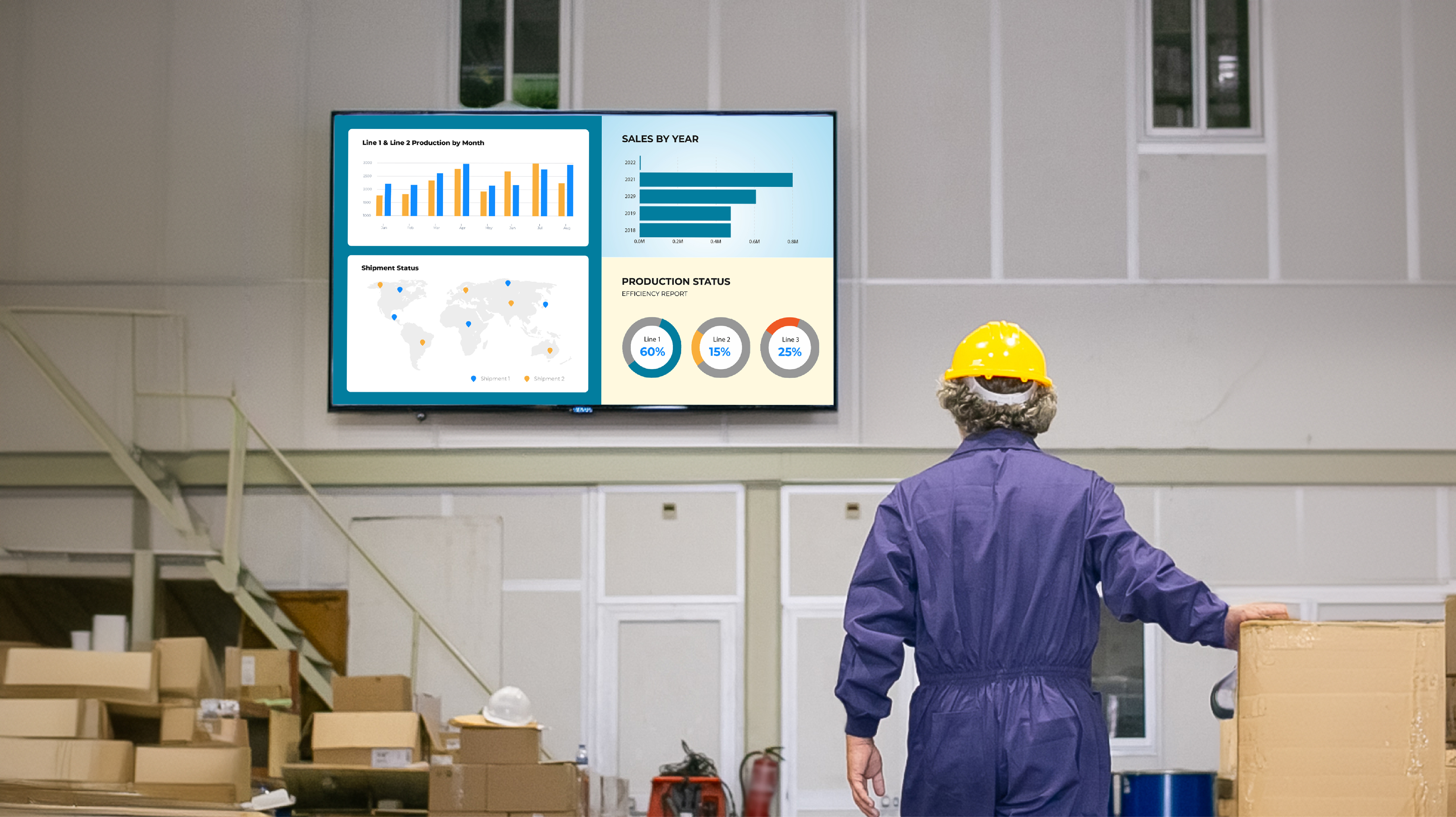The manufacturing industry is dynamic and sensitive. In the past, manufacturing processes relied heavily on historical data and manual analysis. Naturally, reliance on outdated information affected response times to changing conditions or emerging issues. This often led to delayed decision-making and suboptimal outcomes.
However, the rising use of real-time data analytics in manufacturing has changed this for good.
By leveraging advanced sensors, IoT devices, and sophisticated manufacturing analytics software, manufacturers can now collect and analyze data in real-time, providing actionable insights. This includes data from production lines, machines, supply chains, and market trends.
Let’s discuss how real-time data analytics is reshaping the manufacturing landscape, exploring its benefits, solutions, and the future of smart manufacturing.
Benefits of Real-Time Data Analytics in Manufacturing
The benefits of using smart manufacturing solutions are aplenty. Let’s discuss the top ones below:
1. Improved Operational Efficiency
In manufacturing, staying ahead means keeping a close eye on operations. Real-time data analytics lets manufacturers monitor production processes continuously. By analyzing data from machines and production lines as they happen, you can spot bottlenecks, inefficiencies, and potential issues before they escalate. This can boost operational efficiency, slash downtime, and amp up productivity.
2. Enhanced Quality Control
Quality is non-negotiable in manufacturing. Real-time data analytics is your frontline defense. By scrutinizing data from every stage of production on the go, you catch deviations from quality standards. This helps you maintain consistent product excellence while also cutting down on defects and recalls.
3. Data-Driven Decision-Making
The world moves quickly, but manufacturing is even quicker. Decisions need to be quick and smart.
Real-time data analytics provides fast, actionable insights. Whether tweaking production schedules, optimizing resources, or reacting to market shifts, data-backed decisions amp up your agility and competitive edge.
4. Predictive Maintenance
Imagine knowing when a machine might hiccup before it does. Real-time data analytics makes it possible. By crunching numbers from sensors and machinery, you predict maintenance needs ahead of time. This foresight minimizes surprise breakdowns, extends equipment lifespan, and trims maintenance expenses.
Manufacturing Data Analytics Solutions: All You Need to Know
Implementing real-time data analytics in manufacturing hinges on integrating advanced manufacturing data analytics solutions. These solutions encompass a range of technologies and tools designed to collect, process, and analyze data in real-time.
1. IoT devices
The Internet of Things (IoT) lies at the core of real-time data analytics. IoT devices and sensors are strategically deployed throughout manufacturing facilities to gather data from machinery, equipment, and production lines. These devices deliver instantaneous insights into crucial parameters such as temperature, pressure, vibration, and more.
For instance, if an IoT sensor detects higher than optimal temperatures, it triggers real-time alerts, allowing technicians to intervene promptly and prevent potential breakdown.
2. Cloud computing
Cloud computing liberates manufacturers from on-premises infrastructure demands. These smart manufacturing cloud-based solutions enable seamless storage, processing, and real-time analysis of data. They also facilitate cross-departmental collaboration and data sharing across diverse locations, bolstering operational agility and efficiency.
3. Big data analytics
Data flows abundantly in manufacturing. Big data analytics tools use advanced algorithms and machine learning techniques to dissect large volumes of data. This unveils patterns, trends, and correlations that drive process enhancements and foster innovation.
For instance, let’s consider a global consumer electronics manufacturer. By storing production data in the cloud, it becomes accessible to teams across multiple continents remotely. This helps the team achieve real-time visibility into global supply chain operations, enabling rapid decision-making and enhancing overall operational responsiveness.

Making Data Actionable and Accessible in Manufacturing With Digital Signage
Now, the question is — how can employers make this data accessible to workers across the business? Is there a way to communicate these insights for enhanced efficiency? How can employers ensure worker safety through smart manufacturing?
The answer is digital signage.
Using dynamic displays, manufacturing data can be visually communicated to all levels of the workforce instantly. This means production metrics, quality control alerts, and safety protocols can be displayed prominently on screens throughout the factory floor.
This smart manufacturing solution ensures that operators, supervisors, and management alike have immediate access to critical information, enabling quick decision-making and proactive responses to production challenges.
Additionally, advanced signage solutions like L Squared double down as an emergency notification system. Screen emergency messages like evacuation routes, safety protocols, and nearby shelters to ensure employees are safe.
The Future of Smart Manufacturing
Real-time data analytics is a cornerstone of smart manufacturing, a concept that envisions highly automated and data-driven manufacturing processes. This process leverages advanced technologies such as artificial intelligence, machine learning, and the Industrial Internet of Things (IIoT) to create interconnected and intelligent production systems.
In the future, smart manufacturing will continue to evolve, driven by the integration of real-time data analytics and other cutting-edge technologies like digital signage. Smart manufacturing isn't just about keeping up – it's about leading the charge toward a more efficient, responsive, and connected industrial future.




